Swing Wing!!... Wing Swing??...
.
.
.
.
.
Origins
The May 1960 U-2 incident, in which an American CIA U-2 spy plane was shot down over the USSR, stunned the United States government. Besides greatly damaging US-Soviet relations, the incident showed that the Soviet Union had developed a surface-to-air missile that could reach aircraft above 60,000 feet (18,000 meters). The United States Air Force Strategic Air Command (SAC) and the RAF Bomber Command's plans to send subsonic, high-altitude B-47 and V bomber formations into the USSR were now much less viable.[2]
By 1960, SAC had begun moving to low-level penetration which greatly reduced radar detection distances. At the time, SAMs were ineffective against low-flying aircraft, and interceptor aircraft had less of a speed advantage at low altitudes.[3] The Air Force's Tactical Air Command (TAC) was largely concerned with the fighter-bomber and deep strike/interdiction roles. TAC was in the process of receiving its latest design, the Republic F-105 Thunderchief, which was designed to deliver nuclear weapons fast and far, but required long runways.[4] A simpler variable geometry wing configuration with the pivot points farther out from the aircraft's centerline was reported by NASA in 1958, which made swing-wings viable.[5] This led Air Force leaders to encourage its use.[6] In June 1960, the USAF issued specification SOR 183 for a long-range interdiction/strike aircraft able to penetrate Soviet air defenses at very low altitudes and high speeds.[7] The specification also called for the aircraft to operate from short, unprepared airstrips.[6]
In the 1950s, the United States Navy sought a long-range, high-endurance interceptor aircraft to protect its carrier battle groups against long-range anti-ship missiles launched from Soviet jet bombers and submarines. The Navy needed a fleet air defense (FAD) fighter with a more powerful radar, and longer range missiles than the F-4 Phantom II to intercept both enemy bombers and missiles.[8] Seeking a FAD fighter, the Navy started with the subsonic, straight-winged aircraft, the Douglas F6D Missileer in the late 1950s. The Missileer was designed to carry six long-range missiles and loiter for five hours, but would be defenseless after firing its missiles.[8][9] The program was formally canceled in 1961.[8] The Navy had tried variable geometry wings with the XF10F Jaguar, but abandoned it in the early 1950s. It was NASA's simplification which made the variable geometry wings practical.[5] By 1960, increases in aircraft weights required improved high-lift devices, such as variable geometry wings.[10][11] Variable geometry offered high speeds, and maneuverability with heavier payloads, long range, and the ability to take off and land in shorter distances.[10]
Tactical Fighter Experimental (TFX) The U.S. Air Force and Navy were both seeking new aircraft when Robert McNamara was appointed Secretary of Defense in January 1961.[12] The aircraft sought by the two armed services shared the need to carry heavy armament and fuel loads, feature high supersonic speed, twin engines and two seats, and probably use variable geometry wings.[13] On 14 February 1961, McNamara formally directed the services to study the development of a single aircraft that would satisfy both requirements. Early studies indicated that the best option was to base the design on the Air Force requirement, and use a modified version for the Navy.[14] In June 1961, Secretary McNamara ordered the go ahead of Tactical Fighter Experimental (TFX), despite Air Force and Navy efforts to keep their programs separate.[15][16]
The side-by-side seating adopted in the F-111
The Air Force and the Navy could agree only on swing-wing, two-seat, twin-engine design features. The Air Force wanted a tandem-seat aircraft for low-level penetration ground-attack, while the Navy wanted a shorter, high altitude interceptor with side-by-side seating to allow the pilot and radar operator to share the radar display.[14] Also, the Air Force wanted the aircraft designed for 7.33 g with Mach 2.5 speed at altitude and Mach 1.2 speed at low level with an approximate length of 70 ft (21.3 m). The Navy had less strenuous requirements of 6 g with Mach 2 speed at altitude and high subsonic speed (approx. Mach 0.9) at low level with a length of 56 ft (17.1 m). The Navy also wanted the aircraft with a nose large enough for a 48 in (1.2 m) diameter radar dish.[14][17]
McNamara developed a basic set of requirements for TFX based largely on the Air Force's requirements and, on 1 September 1961, ordered the Air Force to develop it.[14][17] A request for proposals (RFP) for the TFX was provided to industry in October 1961. In December, proposals were received from Boeing, General Dynamics, Lockheed, McDonnell, North American and Republic. The evaluation group found all the proposals lacking, but Boeing and General Dynamics were selected to submit enhanced designs. Boeing's proposal was recommended by the selection board in January 1962, with the exception of the engine, which was not considered acceptable. Switching to a crew escape capsule, instead of ejection seats and alterations to radar and missile storage were also needed. Both companies provided updated proposals in April 1962. Air Force reviewers favored Boeing's offering, while the Navy found both submissions unacceptable for its operations. Two more rounds of updates to the proposals were conducted, with Boeing being picked by the selection board.[16][18]
In November 1962, McNamara selected General Dynamics' proposal due to its greater commonality between Air Force and Navy versions. The Boeing aircraft shared less than half of the major structural components. General Dynamics signed the TFX contract in December 1962. A Congressional investigation followed, but would not change the selection.[16][18][19]
The F-111A and B variants used the same airframe structural components and Pratt & Whitney TF30-P-1 turbofan engines. They featured side-by-side crew seating in an escape capsule as required by the Navy. The F-111B's nose was 8.5 feet (2.59 m) shorter so as to fit on existing carrier elevator decks, and had 3.5-foot-longer (1.07 m) wingtips to improve on-station endurance time. The Navy version would carry an AN/AWG-9 Pulse-Doppler radar and AIM-54 Phoenix missiles. The Air Force version would carry the AN/APQ-113 attack radar and the AN/APQ-110 terrain-following radar and air-to-ground armament.[20] A team of engineers at General Dynamics was led by Robert H. Widmer.[21]
Lacking experience with carrier-based fighters, General Dynamics teamed with Grumman for the assembly and testing of the F-111B aircraft. In addition, Grumman would also build the F-111A's aft fuselage and the landing gear.[22] The General Dynamics and Grumman team faced ambitious requirements for range, weapons load, and aircraft weight.[23] The F-111 design also included new features on a production military aircraft, such as variable-geometry wings and afterburning turbofan engines.[22]
The F-111A mockup was inspected in September 1963. The first test F-111A was rolled out of Plant 4 of General Dynamics' Fort Worth, Texas facility on 15 October 1964. It was powered by YTF30-P-1 turbofans and used a set of ejector seats as the escape capsule was not yet available.[20] The F-111A first flew on 21 December 1964 from Carswell Air Force Base, Texas, U.S.[24] The first F-111B was also equipped with ejector seats and first flew on 18 May 1965.[25][26]
Initially there were compressor surge and stall issues in certain parts of the flight regime. NASA, the Air Force, and General Dynamics studies resulted in the engine inlet design being modified in 1965–66, ending with the "Triple Plow I" and "Triple Plow II" designs.[27][28]
The F-111A achieved a speed of Mach 1.3 in February 1965 with an interim intake design.[20][27] Cracks in the F-111's wing attach points were first discovered in 1968 during ground fatigue testing - an F-111 crashed the following year due to this issue.[19] The attach structure required redesign and testing to ensure adequate design and workmanship.[29] Flight testing of the F-111A ran through 1973.[30]
The F-111B was canceled by the Navy in 1968 due to weight and performance issues, along with the need for additional fighter requirements.[31][32] The F-111C model was developed for Australia. Subsequently, the improved F-111E, F-111D, F-111F models were developed for the U.S. Air Force. The strategic bomber FB-111A and the EF-111 electronic warfare versions were later developed for the USAF.[33] Production ended in 1976[34] after 563 F-111 aircraft were built.
Source : Wikipedia
.
.
.
.
.
CONTROLS
-AG1+VTOL Up : Retract Landing Gear
-AG2 : Activate ‘M-117’ Free-Fall Bomb (Bomb Bay)
-AG3 : Jettison (Drop) Fuel Tank
-AG4 : Fire Both ‘AIM-7 Sparrow
-AG5 + Brake : Airbrake
-AG8 (Turn Off) : Swing Wing
.
.
.
.
.
.
.
.
.
.
.
If you like My Creation pls Upvote it, Hehe... 😸
.

.
THX!!!...
Specifications
Spotlights
- Trainzo 4.7 years ago
General Characteristics
- Created On iOS
- Wingspan 57.8ft (17.6m)
- Length 68.2ft (20.8m)
- Height 19.0ft (5.8m)
- Empty Weight 6,968lbs (3,160kg)
- Loaded Weight 10,159lbs (4,608kg)
Performance
- Power/Weight Ratio 6.635
- Wing Loading 50.6lbs/ft2 (247.0kg/m2)
- Wing Area 200.8ft2 (18.7m2)
- Drag Points 8119
Parts
- Number of Parts 249
- Control Surfaces 5
- Performance Cost 1,107

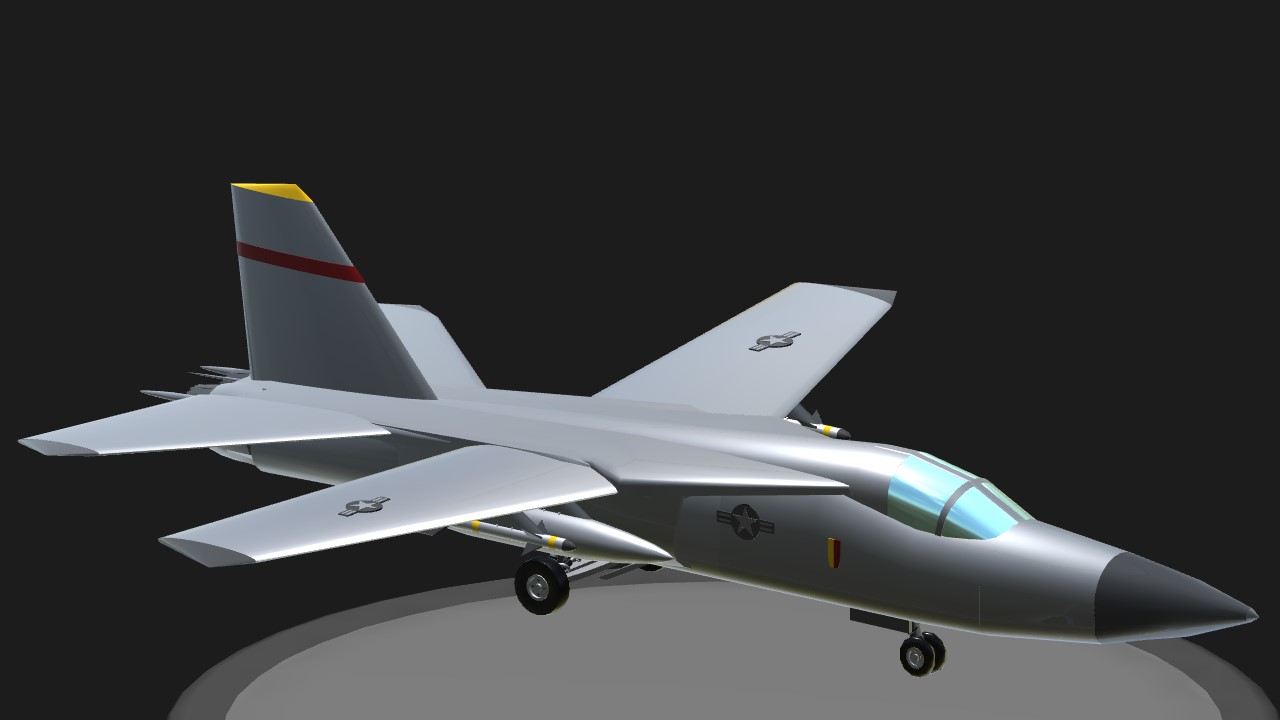
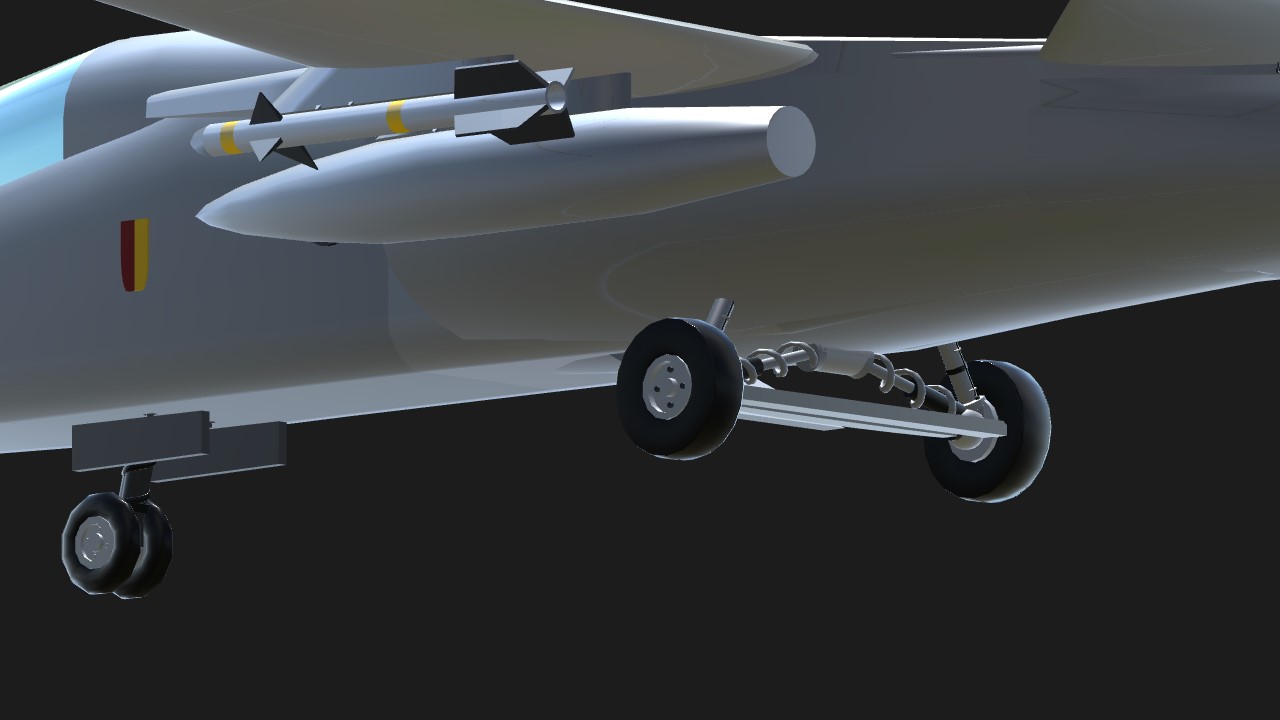
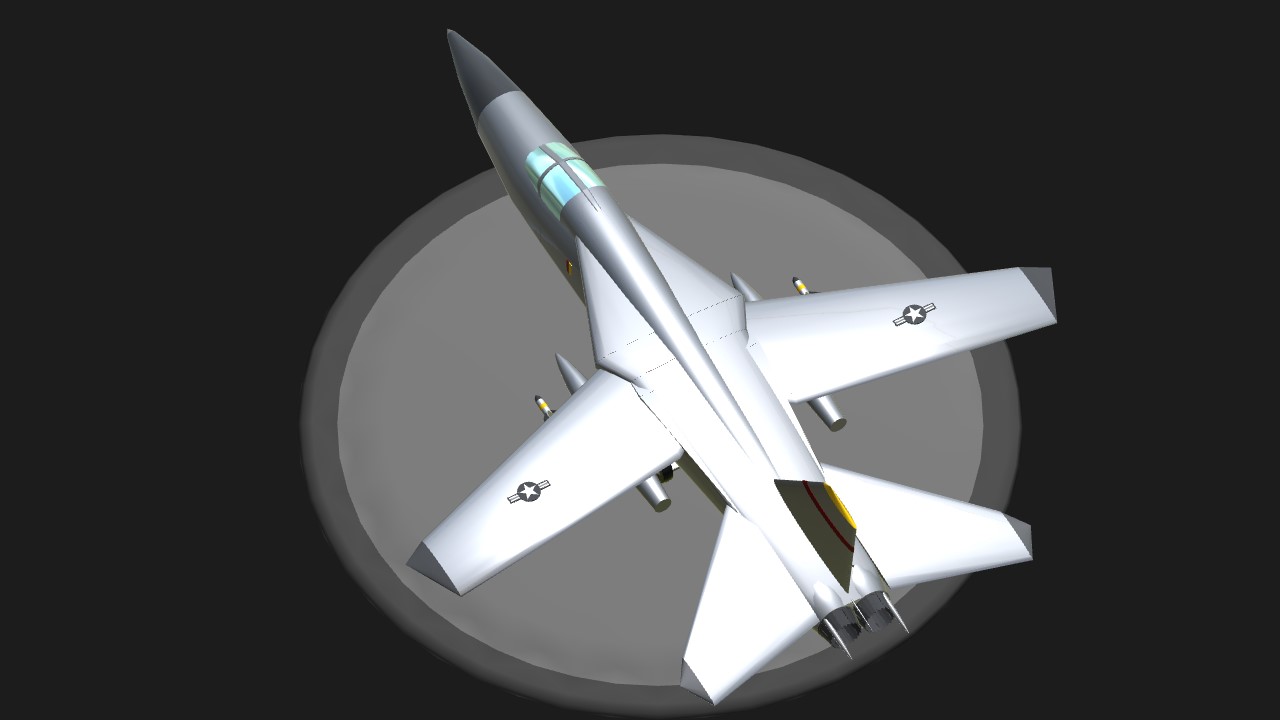
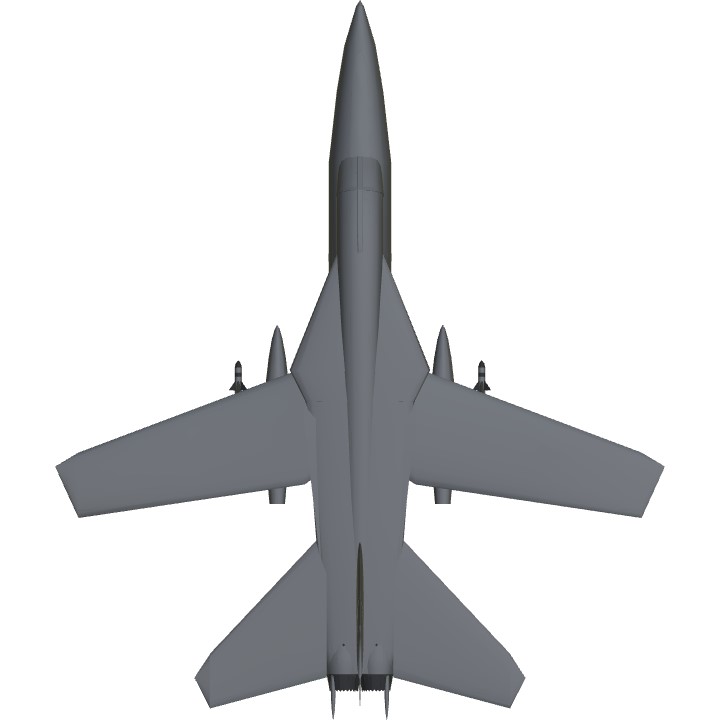
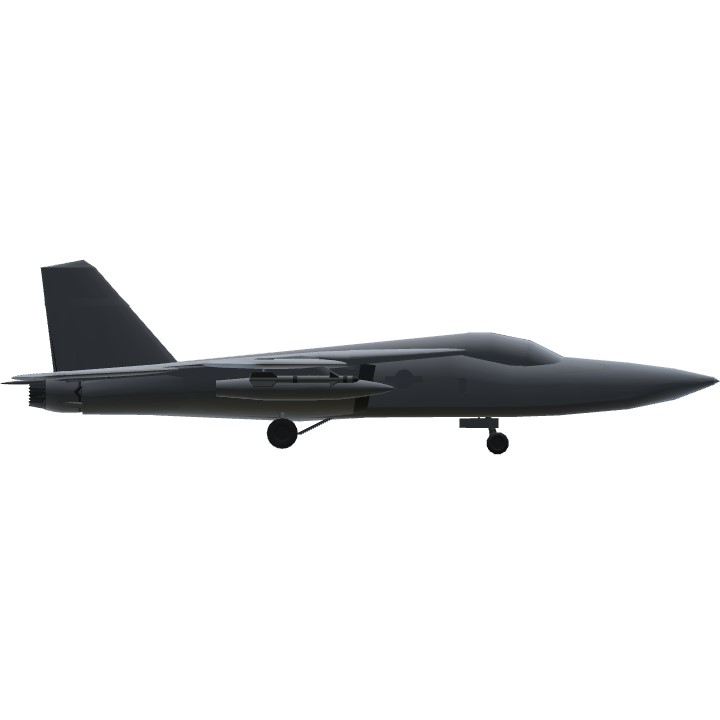
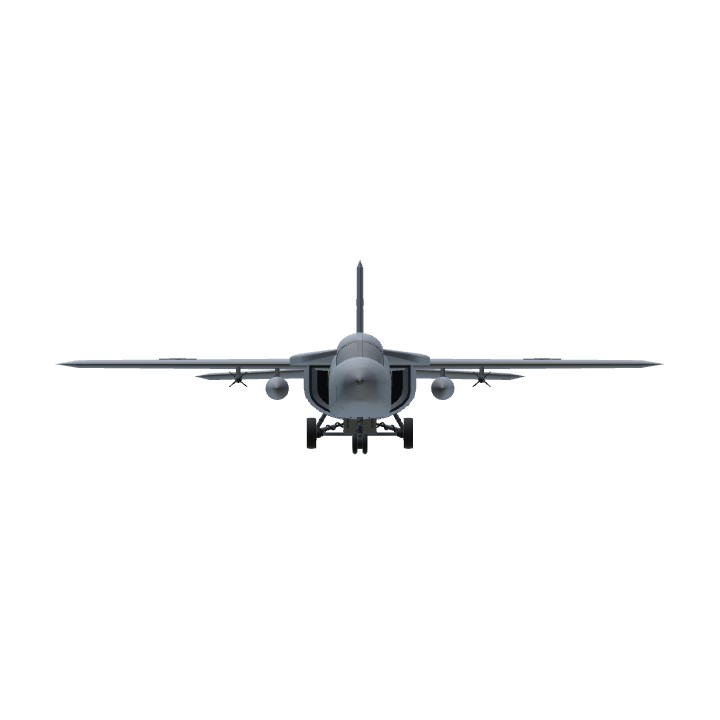
Requested Tags :
@CrimsonOnigiri
@orangnormal001
@UltraLight
Requested Tags :
@Astro12
@ArkRoyalTheDDHunter
@BabushkaTheKompotMaker
@ACEPILOT109 @BlackThuNDR @DameTheNewbie Swing Wing!!!... 😸
:) @PhantomAviator
nice.@MIAW26PERSIAN
lol @Alanthelegendaryfighter
lmao understandable ;) @Lunatics
@MIAW26PERSIAN Yeah. I cane here from simplerocket 2. I never thought that in simpleplanes you can actually made a gun. on the other hand i got bored too
btw you dont have any post? ah let me guess you came from SimpleRockets2 dont you? thats why you have 100 points @Lunatics
XD btw thanks! here ill make you bronze ;) @Lunatics
My dude literally copy paste it from wikipedia 😂 btw nice plane
ah aighty buddy! Thx! 😸 @AWESOMENESS360
duhhhhh, dont you nderstand, hold on @ChrisPy
@MIAW26PERSIAN nah, none of it looks “weird” per say, I was just commenting on the shape of this aircraft’s nose, and how it almost sorta angles upwards, which you’ve replicated nicely.
@MIAW26PERSIAN IOS does support blueprints hit the eye icon and you should see the blueprint icon
um do you mean the front looks weird? @AWESOMENESS360
yes ik, LandingGear but i prefer VTOL @Ruskiwaffle1991
lmao @AWESOMENESS360
Bruh you don't know about landing gear input?
This thing has some interesting controls, and an even more interesting nose section!
thxlmao @AAAagent7
Thx! 😸 @Trainzo
hmm, Press AG8 to swing wing @MoldyBread
I did nothing but download@MIAW26PERSIAN
oh yeah, im too lazy to add bomb bay XD but instead i put 2 M-117 bomb on the bomb bay, AG-2 to activate @MoldyBread